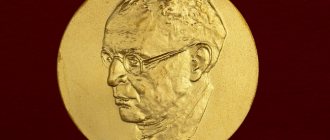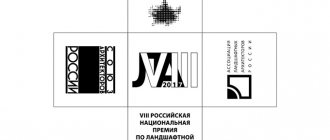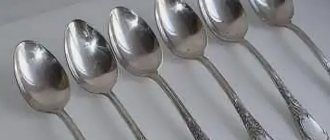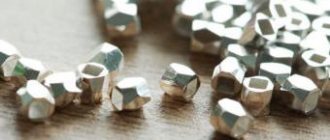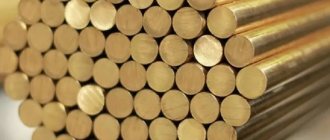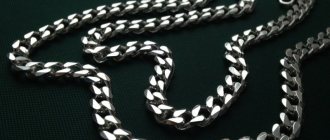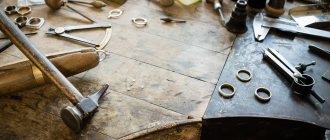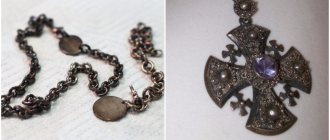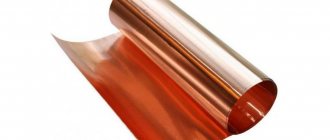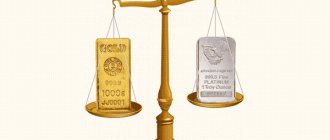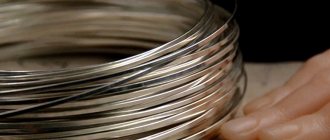Cutlery made of cupronickel and silver has always been a source of family pride. They were taken care of, passed on by inheritance, and in tight financial circumstances they were in no hurry to take them to a pawnshop. Silver tableware items are not inferior in price to jewelry. They are indispensable for holiday serving, but they can also be used every day, since with proper care, such dishes can last a very long time, maintaining a beautiful appearance. It turns out that tableware made of silver and cupronickel are very practical, but only if they are of good quality. In this article we will tell you how to choose the right silverware and how to care for it.
History of nickel silver
The appearance of nickel silver is directly related to cupronickel, which was invented in China. The Chinese protected the cupronickel formula no worse than the secret of creating silk. This is not surprising, because it had completely unique qualities, could replace silver, but at the same time was several times cheaper.
Over time, cupronickel began to be popular among European secular society, which is why they really wanted to reveal the formula of this strange alloy. The best minds in Europe tried to solve this riddle. Whether long or short, chemists discovered the composition of the alloy, which they thought included copper, nickel and zinc. However, they were unable to calculate the ratio of these metals.
I don’t know how things went there, but apparently they didn’t pat the chemists on the back and suspended all research for almost 300 years. And in the 19th century, German researchers were still able to produce a sample of “cupronickel,” which in fact turned out to be not cupronickel at all. Research has shown that this metal was much stronger and more stable; the material is destroyed only in boiling hydrochloric and sulfuric acids.
Thus, German chemists managed not only to repeat the Chinese formula, but also to discover a new alloy of nickel silver. Silver, cupronickel and nickel silver look exactly the same, at first glance it is impossible to distinguish them. However, the cost of nickel silver is the lowest. It is precisely because of its similarity with silver that jewelers began to actively use nickel silver.
We are also preparing to cast our products from nickel silver. This is economically beneficial for you, our dear customers, because its cost will be in the same price category as bronze. This material is resistant to corrosion and temperatures, does not oxidize, does not turn black and does not change its properties over time. Jewelry made from nickel silver looks as much like silver as possible.
It is possible to distinguish them only by checking the sample. So, silver will have a 925 standard, but nickel silver will not have it at all, or in some cases they will put three letters “mnc”, which means copper, nickel and zinc.
Why does the price for nickel silver scrap constantly change?
The dynamics of prices for scrap metal (including nickel silver scrap) is like a roller coaster. This is due to several factors:
- balance of supply and demand;
- changes in exchange rates;
- conditions of the reception point.
The quality of scrap also greatly influences pricing. At the maximum price, you can sell cupronickel with a percentage of copper to nickel of 70 to 30 and a minimum level of clogging.
What brands of cupronickel are most valuable?
When determining the cost of metal, not only the condition of the scrap and the degree of contamination, but also the grade of cupronickel is taken into account. For the maximum price you can sell nickel silver of the MN19, MN16, MN25, MNZhMts30-1-1 and MNZhMts10-1-1 brands. To determine whether scrap belongs to a particular brand, it is necessary to conduct a chemical analysis. Our company has the equipment necessary for analysis, so customers can be sure that they are receiving a fair price.
How to clean nickel silver?
There are a huge number of options available and you can clean nickel silver at home. To do this, you can use toothpowder or toothpaste, dishwashing powder, salt or soda. These are simple solutions that will help bring back the “newness” of your jewelry. Very soon you will be able to purchase nickel silver products in our store. In the meantime, don't forget that you can always buy silver or bronze. Products from which are not inferior in quality and characteristics.
Nickel silver casting
Friends, as it turned out in practice, casting nickel silver is not a simple matter. When I tried to independently form a nickel silver alloy using formulas from the Internet, I was not successful. The defect rate reaches 90%, which is very high.
Consultations with specialists who have experience working with nickel silver alloy showed that a good indicator of the quality of injection molding in open systems is a defect rate of 50%. As a result, by selecting the metal recipe, we managed to reach the quality/defect mark of 50/50.
Later, it became known for certain that obtaining 100% casting quality is possible only by using certain alloys and only one type of injection molding machines. Although this fact can also be considered dubious.
Nevertheless, in the end we achieved almost 100% quality of finished products. The actual defect rate at the time of writing this article is 95%. Out of 100 decorations placed on the Christmas tree, only 5 were defective. Upon closer examination, it turns out that 5 defective works can be attributed to defective wax models, bubbles under the surface of the wax.
Now the nickel silver alloy is in mass production and in principle no problems arise with its casting.
When casting this metal, special attention must be paid to the casting machine and not to the alloy itself. It is also necessary to strictly adhere to the production technology as a whole, from the moment of forming the tree, the time between evacuation of the flask and before placing it in the muffle furnace.
The diameter of the gating system is also important, although on certain closed-type machines this parameter is not important.
Cupronickel alloys
Cupronickel alloys have different percentage compositions. The most common cupronickel alloy contains from 5 to 30 percent nickel, with the remaining percentages being iron (0.8 percent) and manganese (0.1 percent). There are other alloys that are very similar in their chemical composition to cupronickel, but have different names:
- Cupronickel, similar to cupronickel, contains only copper and nickel in equal proportions;
- Monel, contains up to 67 percent nickel;
- nickel silver, contains additional zinc;
- Constantan, very close in chemical composition to cupronickel, contains 55 percent copper and 45 percent nickel.
Properties of cupronickel
Cupronickel is very similar in appearance to silver. Sometimes it can be very difficult to distinguish cupronickel silver items from silver items. Cupronickel alloy is a well-known imitation of silver. Especially the cupronickel alloy perfectly imitates silver in jewelry. Some unscrupulous traders sometimes try to sell nickel silver items by passing them off as silver.
Cupronickel silver products are often coated with silver. Cupronickel silver-plated cutlery and crockery look like real silverware. Therefore, when buying silver jewelry and cutlery, we need to look very carefully at what we are buying. Cupronickel has greater mechanical strength compared to silver. Cupronickel alloy has high corrosion resistance and good plastic properties. Due to its high plastic properties, cupronickel alloy is easy to process. Cupronickel alloy produces elegant and sophisticated products.
Where is it used?
The properties of cupronickel ensured its use by industrialists, decorators, and bankers.
Industry, medicine
The structure of the alloy allows all types of mechanical processing - cutting, forging, stamping, soldering. And at any temperature.
This determines the areas of application of cupronickel:
- High precision resistors, heat generators.
- Production of components for trawlers, cruise ships, ocean liners. And private yachts of the premium segment.
- In combination with lithium, nickel-iron alloys are purchased for the production of batteries. They are three times more effective than their analogues. Lithium, as the lightest metal, reduces the massiveness of the filling of nickel-zinc or ferrous batteries.
Cupronickel is a material for medical instruments: scalpels, forceps, etc.
Plus the possibility of decorative processing of products (chasing, cladding, polishing).
Decor
Decorators work with alloy in two directions:
- Jewelry. Rings, earrings, necklaces, and cufflinks made of cupronickel are indistinguishable from silver in appearance. However, large companies are not interested in the alloy due to its low cost. It is more often done by hand-made masters. The processing makes them look like museum pieces.
- Dishes. Sets of cupronickel tableware - spoons / forks / knives / sockets / tureens - are a pride and heirloom in many homes. Their advantages: they are several times cheaper than silver ones, but more durable and look presentable.
Especially good are gold-plated, silver-plated, blackened or other coated surfaces.
Applying such a layer is not only a tribute to aesthetics or status. Pure cupronickel imparts tangible metallic notes to food. Copper is toxic, especially when hot.
Banking sector
Wear resistance, coupled with low cost, prompted the National Banks of many countries to issue cupronickel coins.
Almost all silver-colored coins in circulation are made of cupronickel.
In the USSR and Russia, coinage is controlled by GOZNAK:
- In the 1930-1950s, nickels, 10-, 15-, 20-kopeck coins were issued.
Today, the subject of numismatists' hunt is a Soviet patch of the 1937 model.
- Since the 70s, the line has been supplemented with anniversary and regular “rubles”.
The last Soviet coin was the bimetallic 10-rublevik.
In Russia, until the mid-1990s, coins were minted in denominations of 10, 20, 50, 100 rubles. After the redenomination of 1997 - 1 and 2 rubles.
How to distinguish cupronickel from silver
6 ways to distinguish cupronickel from silver:
- if the product bears the abbreviation MNC (an alloy of copper, nickel and zinc) instead of a sample, it is cupronickel;
- hold the product in water - nothing will happen to the silver, and cupronickel will become covered with a green coating;
- rub the surface of the product with a lapis pencil - the silver will not change, but a dark spot will appear on the cupronickel;
- you can weigh two similar products - nickel silver is lighter than silver;
- smell the object being examined - cupronickel smells like copper;
- use iodine - silver in the sun will darken in the place where iodine was used.
Cupronickel has a melting point of 1170 degrees, higher than that of silver (960 degrees). The melting point of various cupronickel alloys can vary depending on the component composition.
Cupronickel alloy has a structure that allows it to be mechanically processed both hot and cold. Cupronickel is well processed, alloyed with other metals, cut, forged, embossed, stamped, polished and soldered.
3 Ways to Effectively Clean Gold to Make It Shine
Technological characteristics
The red tint of copper is quenched by the high nickel content. As a result, the alloy becomes white and has a blue or green tint. The specific gravity is 7.5 g/cubic meter. cm. Brinell hardness is 80 kg/mm.
To obtain a high quality alloy, various standards are followed. The rules of GOST 492-2006 regulate the production of alloys MNTs 15-20, MNTs 12-24, MNTs 18-27, MNTs 18-20. All alloy options are a variety of rods, sheets, tubes, strips and strips. The difference between them lies in the different amounts of nickel and zinc. Composition of MNC 15: 13.5%-16.5% nickel, 18%-22% zinc. This version of the alloy is called a single-phase alloy. It is a solution in a solid state. Its special feature is that it can be processed hot or cold using the pressure method.
When cutlery is produced from the alloy in question, it is plated with gold or silver. This procedure is necessary to prevent metallic taste during application. Coating standards are regulated by GOST 24320-80. They prescribe the following standards:
- for cutlery 24.00 µm (deviation ±3.60 µm possible);
- for knife handles 18.00 µm (deviation ±2.70 µm possible).
Download GOST 492-2006
Download GOST 24320-80
When applying gold to silver, the thickness is 0.5 microns.
Cupronickel silver cutlery: alloy composition
An alloy of light-colored metals, which is now universally known under the name cupronickel, appeared in ancient times. In Mesopotamia, around the third century BC, it was called white copper and was widely used in the production of utensils, various vessels and household items. Then, in numerous wars and under the influence of time, the secret of alloy technology was lost for several thousand years.
It is believed that cupronickel was invented, or rather recreated, by the French inventors Maillot and Chaurier in the nineteenth century. Despite the fact that the invention was made by the French, cupronickel silver was called “German silver” for a long time. Kitchen utensils, dishes, church vessels, and decorations were made from it.
Advantages and disadvantages
The formula for successful rafting has a lot of advantages:
- Attractive appearance; The metal is difficult to distinguish from silver in appearance.
- It is environmentally inert, which allows it to be used in the production of tableware and medical instruments.
- Cupronickel resists rust, so the alloy is used in aggressive environments.
- It has ductility and malleability: the metal is easy to process.
The disadvantages include the high price.
Melchior - what is it?
It is an alloy of copper and nickel. It belongs to the group of non-ferrous metals. May have minor amounts of iron, silver, cobalt, manganese, zinc and other components. The higher the percentage of nickel, the more the anti-corrosion properties of the alloy increase, and its strength and durability improve.
Cutlery and dishes made of cupronickel:
- They heat up at a lower rate than products made from other metals;
- The alloy is not subject to corrosion, does not oxidize, objects made from it do not rust;
- The material has a good degree of strength, the dishes do not deform, the cutlery does not bend during use;
- Tableware and cutlery are distinguished by their sophistication and beauty;
- Due to its composition, cupronickel has a beneficial effect on the human body;
- The items are relatively inexpensive.
The main color can vary from light tones, with a slight yellowness, to orange.
Where to get scrap cupronickel
Reception of scrap metal works with all types of products, but the cost of purchase depends on the compliance of the raw materials with GOSTs. If you want to sell nickel silver in Moscow, finding such an alloy will not be difficult. This material is not only used for the production of silverware, but can also be present in the following products:
- construction and decorative elements;
- pipes and fittings;
- medical equipment;
- grids for various purposes;
- ship equipment.
The composition resists corrosion well, remains operational in saline and alkaline solutions, and is also able to withstand intense mechanical loads.
Composition and main characteristics
Cupronickel is an alloy whose composition is 70–80% copper and 30–20% nickel. Contains no more than 1% iron and manganese, 5% cobalt.
It is much stronger than silver and lighter in weight. No magnetic properties. The higher the percentage of manganese and iron in the composition, the greater the ductility, density and thermal conductivity it has. Reacts with other metals, quickly oxidizes under the influence of water and air, so cannot be used in the dishwasher.
There are several types of compositions, which are called cupronickel. The name and technical characteristics depend on the percentage of nickel in the finished material and the presence of other components:
- Nickel silver is an alloy consisting of about 40% copper, up to 15 nickel and up to 45 zinc. Often other metals are added to its basic composition, sometimes it has a bluish or bluish tint. The composition is very durable, strong, elastic.
- Monel is an alloy with a predominance of nickel, it contains up to 67%, copper up to 35%, iron and manganese no more than 2.5%.
- Brass is a material containing up to 80% copper, up to 50% zinc, with nickel, iron, and tin. Previously, this composition belonged to the cupronickel group, so objects made of silver-plated brass were also called cupronickel.
How to determine the authenticity of cupronickel at home?
It is very difficult for an inexperienced person to distinguish the alloy. There are tests that can determine the alloy:
- Silver-plated or gold-plated devices are marked - MN, MNTs (copper, nickel, zinc). Precious metal items only have a digital hallmark.
- Drop clean water onto the item being tested. After 2-3 hours, the silver will remain unchanged, and a green coating will form on the cupronickel.
- Silver is heavier than cupronickel, so items of equal size will have different weights.
- Having rubbed cupronickel, you can smell copper, silver does not smell of anything.
- If there is no mark on the product, most likely it is cupronickel, even coated with valuable metal.
How to make cupronickel dark?
Darkening nickel silver, nickel silver, brass, and other alloys containing copper makes objects more attractive. Under normal conditions, the process can last for years, but with the help of chemical solutions, artificial aging can be achieved instantly.
Before patination, you need to check safety precautions, since some chemical solutions are extremely toxic and emit fumes that are harmful to health. It is necessary to provide exhaust and fresh air supply.
The products must first be cleaned, degreased and washed with warm water, and dried thoroughly.
There are several ways to darken alloys:
- Using “sulfur liver” - mix powdered sulfur with potash 1:2, then put the composition in an unnecessary tin on the stove and after melting begins, heat for another 15 minutes. Cool, grind into powder, store in a sealed container. To darken the object, immerse it in a solution of 1 liter of water and a mixture - from 1 to 20 g. The more powder, the darker the product will become.
- Nickel silver alloys can be darkened with copper sulfate dissolved in water, into which ammonia is poured until a rich blue color is obtained. The object is immersed for some time in the resulting liquid and then slightly heated.
- You can treat the item with a solution of platinum chloride or immerse the item in it. If the darkening is insignificant, then pour a little hydrochloric acid into the solution.
How to use and care
Cupronickel, like fine silver, fades and darkens over time. Even with proper storage, zero humidity in the room is unattainable.
Cleaning
The easiest way to add shine is to buy a special cleaner for cupronickel. Its disadvantage is the need to thoroughly rinse the item after cleaning. Especially dishes.
Generations of owners have tested methods of caring for nickel silver using improvised means:
- Apply a mixture of moistened soda to flannel, suede or other soft fabric. Rub the surface until results are obtained.
- Pour ammonia over the products, then rinse with running water and wipe dry. You can work wearing a mask.
- Boil cupronickel in a decoction of garlic, onion peels or crushed eggshells.
Cleaning with tooth powder, toothpaste, crushed chalk, or products containing bleach is excluded. The first three will scratch the product. The latter will make the cupronickel darken.
Usage
After washing cupronickel dishes after a meal, rinse them with a soda solution (45-50 g per liter of water).
Dishes or other items are immediately wiped dry to prevent them from becoming dull.
Regular thorough cleaning of jewelry or devices will not hurt even if they are used constantly. Resuscitating “neglected” cupronickel will take more time, effort and nerves.
It is better to store products (dishes and jewelry) closed in their “original” packaging. Alternatively, wrapped in cling film or foil. This will minimize mechanical or “wet” effects. That is, they will not be scratched or darken.
Hallmark on nickel silver and cupronickel: what are the differences?
Often buyers want to purchase elegant and high-quality products known since the times of the USSR. But many do not suspect that genuine cupronickel dishes and cutlery have stopped being made since the collapse of the Soviet Union, in the middle of the last century. No less beautiful and durable objects began to be made from nickel silver alloy. It is also called cupronickel, but it contains zinc.
Nickel silver devices are almost impossible to distinguish from silver in appearance. Only that upon contact with human skin or air, silver oxidizes and acquires a dark color, but nickel silver products remain unchanged.
To distinguish cupronickel from nickel silver, you need to look at the mark - cupronickel has the sign MN (copper, nickel), nickel silver is marked with the letters MNTs (copper, nickel, zinc). If there is no mark on the item, then you need to find out the approximate date of manufacture or carefully consider the color of the item. Unlike nickel silver, cupronickel will have a yellowish tint.
Application area
One of the important distinctive properties of cupronickel is its immunity to sea water. Therefore, the alloy is widely used in shipbuilding, making parts for marine transport and submarines. They also make thermoelements and high-precision resistors. Cupronickel is used for modern coins. Monel alloy is used as a structural material in industry.
Widely used in jewelry. The finished products look like silver. Often blackened, patinated, processed with filigree and granulation.
For several centuries, this alloy has been used to make dishes that are not inferior in beauty to silver and superior in properties:
Cupronickel cutlery - knives, forks, spoons, made in the same design, are a table decoration and an excellent purchase for your own use and as a wonderful gift for any memorable date.
Samovars, coffee Turks and cezves are coated with a tin layer on the inside, which makes them safe when exposed to high heat.
Cup holders - low thermal conductivity and durability will allow you to enjoy your favorite drink without the risk of burning your hands.
Trays, candy bowls, dishes, salt shakers and vases - beautiful products will be the highlight of the festive table and decorate the room.
Tea and coffee sets - make up various sets and items, decorated in design, for any number of people.
Wine sets - usually a set includes a jug with glasses, a tray, and sometimes a set of saucers or shot glasses.
Varieties of cupronickel spoons:
- Traditional cupronickel spoons with blackening. Holiday option. Exquisite, each item is engraved by hand. All products have a carved monogram.
- With a polished surface - for everyday use. A monogram is usually engraved on the left side of the handle, and the alloy grade is indicated on the back.
- With natural gilding - for the most special occasions. The best and most expensive products are considered to be “Kolchuginsky Melchior”. The factory's cutlery is famous for its quality. Items with silver and gilding are designed in the style of the name of the cutlery.
Is cupronickel harmful to health?
Alloys are not only not harmful, but even beneficial to health. After all, cupronickel contains:
- Nickel – as it accumulates in the body, contributes to the long-term maintenance of low blood glucose levels and enhances the beneficial effect of the hormone insulin. Nickel ions promote better absorption of vitamin C and stabilize blood pressure.
- Copper is one of the components of human blood; it is part of enzymes and destroys pathogenic bacteria.
- Cupronickel alloy has a beneficial effect on the skin. Increases elasticity and maintains youth. With constant use of water saturated with cupronickel ions, it reduces the number of wrinkles.
Pricing
The price of cupronickel products varies depending on many indicators:
- The number of components contained in the composition. In this case, it is necessary to take into account how much each of the impurities costs on the world market separately.
- Condition of the material. If the surface of the alloy has been subjected to additional treatment against corrosion or rust has begun to spread throughout the product, the price will be lower.
- We must not forget that prices for wholesale buyers are lower than for ordinary consumers.
- The cost of the finished product is influenced by the methods of its primary and secondary processing. If the material has been heated to improve performance, it will cost more.
Pure metals that make up the alloy are more expensive than their mixture. This is due to the processes of extraction and processing of raw materials.
Cupronickel is considered a popular alloy in various industries. Due to its similarity to silver, this material is used in jewelry making. However, without proper care, the appearance of a cupronickel product will quickly deteriorate.
